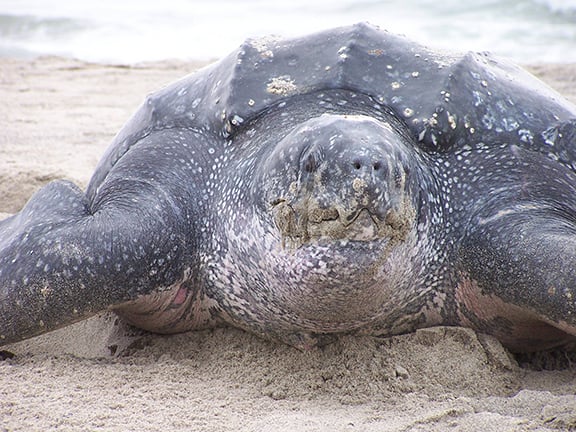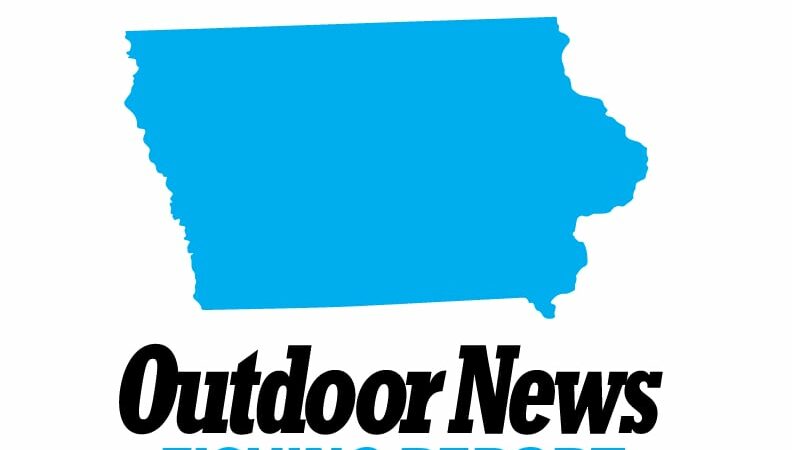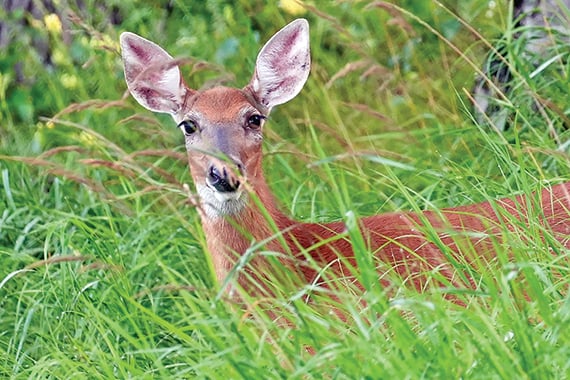Michigan Mixed Bag: Input needed on proposed walleye slot limit on lakes in Luce, Mackinac counties – Outdoor News

Newberry, Mich. — The Michigan DNR invites the public to comment on proposed walleye regulation changes on Big Manistique Lake in Luce and Mackinac counties, and Milakokia Lake in Mackinac County.
Currently there is a 15-inch minimum size limit and a daily possession limit of five walleyes on both lakes.
The proposed regulation change adds a protected slot limit in which anglers would not be able to possess any walleye between 18 and 23 inches in the daily possession limit. The daily possession limit would also be changed to three fish. Anglers could possess fish 15 inches to 18 inches and only one walleye 23 inches long or greater.
To voice your opinion on the proposal visit here.
MORE COVERAGE FROM MICHIGAN OUTDOOR NEWS:
Outdoor Observations: Will Michigan deer-baiting ban be lifted? History says no
Legislation seeks to overturn deer baiting ban in Michigan
Michigan Natural Resources Commission mulls changes to bear hunt, raising concerns with some
Ultimate Sport Show Returns to Grand Rapids
Grand Rapids, Mich. — Michigan’s finest tradition for the avid fisherman, hunter or outdoor loving family, the Ultimate Sport Show, returns to DeVos Place in Grand Rapids on March 13-16.
Exhibitors will be at the show with the latest in outdoor gear, travel information and fishing boats. Show features include: antique lures, a trout pond, the Hawg Trough, woodcarvers, Lumberjacks, Big Buck Night – West (Thursday night) and more.
Nearly 100 fishing and hunting seminars will be held on five stages, including Lake Ultimate, the 110,000 gallon indoor lake.
Show hours are 1 p.m. to 8 p.m. Thursday, 12 p.m. to 8 p.m. Friday, 10 a.m. to 8 p.m. Saturday, and 10 a.m. to 5 p.m. Sunday.
Visit www.showspan.com for more info.
Clean Boats, Clean Waters Program Seeking Summer Mobile Boat Wash Crew
Lansing — Aquatic invasive species primarily spread from one water body to another by “hitchhiking” on boats, trailers, and other equipment.
You can help protect Michigan waters from invasive species by teaching boaters about invasive species, giving demonstrations on proper boat cleaning, and conducting invasive species boater surveys to the public.
Through a cooperative agreement with the U.S. Forest Service and the Michigan Department of Environment, Great Lakes, and Energy (EGLE), Michigan State University is leading a multi-year program to teach boaters how to reduce this risk by properly inspecting and cleaning their equipment.
Interested? Apply now at Careers.MSU.edu for job #1021509.
GLRI Reauthorization Introduced in U.S. Senate
Washington DC — Sen. Gary Peters (D-Mich.) and Sen. Todd Young (R-Ind.) reintroduced in the U.S. Senate the bipartisan Great Lakes Restoration Initiative (GLRI) Act of 2025, a bill intended to reauthorize the GLRI program for a five-year period at $500 million per year.
GLRI funding assists states, tribes and local communities in implementing crucial on-the-ground projects, including habitat restoration, helping farmers do more to combat non-point source agrichemical run-off, cleaning up legacy pollution and toxic sediments, and preventing the establishment or spread of destructive invasive species. It is a well-established program that helps protect 22% of the world’s source of freshwater.
“The Alliance would like to thank Senator Gary Peters and Senator Todd Young in sponsoring this bipartisan legislation to continue this important program that directly benefits the tens of millions of Americans living in the Great Lakes region,” said Don Jodrey, Alliance for the Great Lakes director of federal government relations.
To date, the GLRI program has funded more than 7,563 individual projects totaling $3.7 billion, greatly improving the quality of life throughout the region. The GLRI also provides major economic benefits, as it is estimated that for every dollar spent, an additional three dollars of value is added to the regional economy.
Boone and Crockett Club Expands Boundary for Shiras’ Moose to Include Nevada
Missoula, Mont. — The Boone and Crockett Club recently voted unanimously to expand the boundary for Shiras’ moose to include the state of Nevada. The distribution of moose in the western United States was updated in 2015 to include northeast Nevada and management through the Nevada Department of Wildlife (NDOW) has allowed the state’s moose population to continue to expand and grow.
The agency has determined that hunter harvest is sustainable and could also provide critical biological information. As a result, NDOW approached the Club about adding moose hunted in Nevada to the organization’s big game records keeping program.
“We are happy to promote a conservation success story where an iconic western big game species like Shiras’ moose have grown enough in population to support a regulated hunting program,” said Kyle Lehr, the Boone and Crockett Club’s director of big game records. “Adding Nevada to the boundary for Shiras’ moose celebrates this accomplishment and allows the agency and B&C to gather critical data about the species. Measuring both hunter-harvested or found bull moose antlers creates a data set that shows how management of habitat can support a thriving moose population that can produce mature males.”






